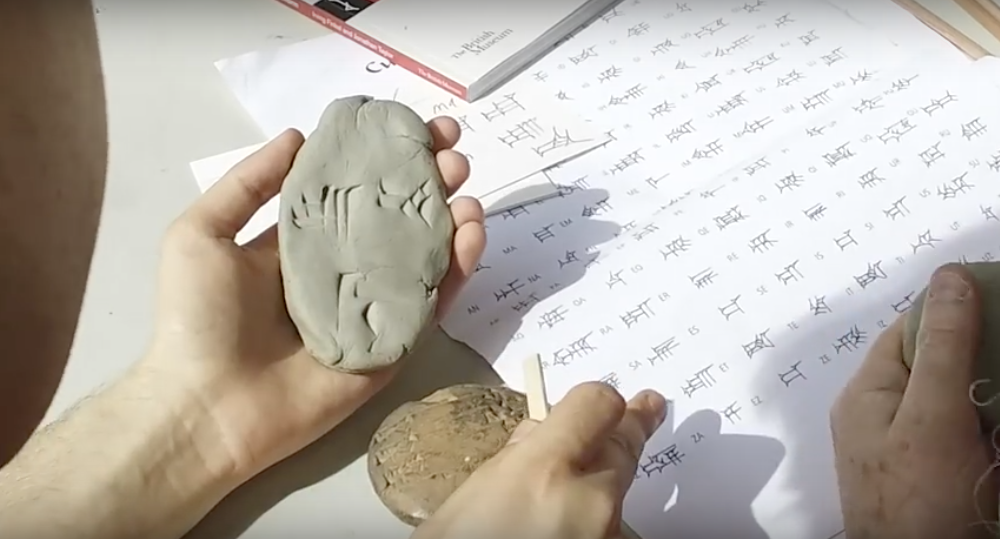
"Teach­ing child vis­i­tors how to write their names using an unfa­mil­iar or antique alpha­bet is a favorite activ­i­ty of muse­um edu­ca­tors, but Dr. Irv­ing Finkel, a cuneiform expert who spe­cial­izes in ancient Mesopotami­an med­i­cine and mag­ic, has grander designs. His employ­er, the British Muse­um, has over 130,000 tablets span­ning Mesopotamia's Ear­ly Dynas­tic peri­od to the Neo-Baby­lon­ian Empire "just wait­ing for young schol­ars to come devote them­selves to (the) monk­ish work" of deci­pher­ing them."
"But let's not put the ox before the cart. As the extreme­ly per­son­al Dr. Finkel shows Matt Gray and Tom Scott of Matt and Tom's Park Bench, above, cuneiform con­sists of three components-upright, hor­i­zon­tal and diagonal-made by press­ing the edge of a reed sty­lus, or pop­si­cle stick if you pre­fer, into a clay tablet. The mechan­i­cal process seems fair­ly easy to get the hang of, but mas­ter­ing the old­est writ­ing sys­tem in the world will take you around six years of ded­i­cat­ed study."
Hands-on name-writing with unfamiliar alphabets serves as a gateway activity for introducing children to cuneiform. The British Museum holds over 130,000 Mesopotamian tablets available for study in an open-access Department of the Middle East study room. Dr. Irving Finkel aims to recruit new scholars by showcasing tactile learning and expert guidance. Cuneiform signs are formed from three wedge types pressed with a reed stylus into clay tablets. The mechanical technique is straightforward, but mastering the syllabic system takes about six years of dedicated study. Properly formed syllables join into flowing calligraphy readable by an educated Babylonian.
Read at Open Culture
Unable to calculate read time
Collection
[
|
...
]